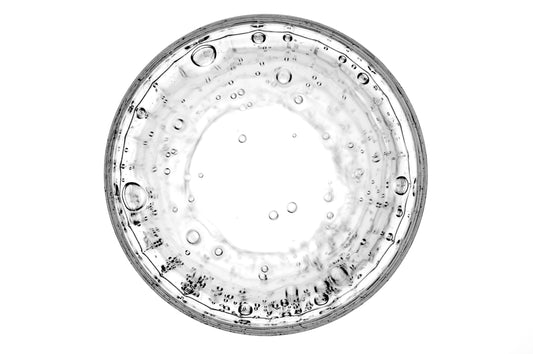Welcome to the Invent Research Hub
Discover resources, updates, and insights for life science research. From protocol tips to the latest in cell and organelle isolation, this hub is designed to support scientists, researchers, and lab professionals at every stage of their workflow.
Tech Bulletin
Commonly Used Organelle Marker Antibodies in Pl...
Plasma Membrane Function Common Marker Proteins Notes General marker PIP2 (Plasma membrane intrinsic protein 2) Aquaporin, widely used PM marker in plants Proton pump H⁺-ATPase (AHA1/AHA2) Most common PM marker...
Commonly Used Organelle Marker Antibodies in Pl...
Plasma Membrane Function Common Marker Proteins Notes General marker PIP2 (Plasma membrane intrinsic protein 2) Aquaporin, widely used PM marker in plants Proton pump H⁺-ATPase (AHA1/AHA2) Most common PM marker...
Clear Separation of Cytosolic and Nuclear Fract...
(Invent Biotechnologies Inc.) Kong et al. (NF-κB restrains nutrient-dependent transcription programs through chromatin modulation in Drosophila. bioRxiv, 2025-10.) explored how the Drosophila NF-κB homolog, Relish, modulates nutrient-dependent transcriptional programs through...
Clear Separation of Cytosolic and Nuclear Fract...
(Invent Biotechnologies Inc.) Kong et al. (NF-κB restrains nutrient-dependent transcription programs through chromatin modulation in Drosophila. bioRxiv, 2025-10.) explored how the Drosophila NF-κB homolog, Relish, modulates nutrient-dependent transcriptional programs through...
Efficient Multi-Species Serum Proteomics: Evalu...
(Invent Biotechnologies Inc.) Download as a PDF Peng et al. conducted a systematic study (A cross-species proteomic assessment of cost-effective platforms for depleting high-abundant proteins from blood serum. BMC Methods...
Efficient Multi-Species Serum Proteomics: Evalu...
(Invent Biotechnologies Inc.) Download as a PDF Peng et al. conducted a systematic study (A cross-species proteomic assessment of cost-effective platforms for depleting high-abundant proteins from blood serum. BMC Methods...
AT-022 is used to Dissect Physiological Roles o...
(Quanzhi Li Ph. D. Invent Biotechnologies Inc.) Download as a pdf A recent study (Wei, W., et al., (2024), PTER is a N-acetyltaurine hydrolase that regulates feeding and obesity. Nature, 633(8028),...
AT-022 is used to Dissect Physiological Roles o...
(Quanzhi Li Ph. D. Invent Biotechnologies Inc.) Download as a pdf A recent study (Wei, W., et al., (2024), PTER is a N-acetyltaurine hydrolase that regulates feeding and obesity. Nature, 633(8028),...
Minute™ Endosome Isolation Kit (ED-028) for Stu...
(Quanzhi Li Ph. D. Invent Biotechnologies Inc.) Download as a pdf Wang et al. recently publish a paper titled Trans-Golgi Network Tethering Factors Regulate TBK1 Trafficking and Promote...
Minute™ Endosome Isolation Kit (ED-028) for Stu...
(Quanzhi Li Ph. D. Invent Biotechnologies Inc.) Download as a pdf Wang et al. recently publish a paper titled Trans-Golgi Network Tethering Factors Regulate TBK1 Trafficking and Promote...
snRNA-Seq for Very Small Punches of Brain Tissues
(Quanzhi Li Ph.D. Invent Biotechnologies Inc.) Download as a PDF Wojick et al., [A nociceptive amygdala-striatal pathway modulating affective-motivational pain. Science Advances, (2025), 11(30)] identify a dedicated nociceptive amygdala-striatal...
snRNA-Seq for Very Small Punches of Brain Tissues
(Quanzhi Li Ph.D. Invent Biotechnologies Inc.) Download as a PDF Wojick et al., [A nociceptive amygdala-striatal pathway modulating affective-motivational pain. Science Advances, (2025), 11(30)] identify a dedicated nociceptive amygdala-striatal...
Blog Posts
A newly published paper in Cell deciphered the ...
Plants do not have nervous systems. How do they sense changes in ambient temperature and initiate survival responses? In December 2025, the team of Hongxuan et al. published a study...
A newly published paper in Cell deciphered the ...
Plants do not have nervous systems. How do they sense changes in ambient temperature and initiate survival responses? In December 2025, the team of Hongxuan et al. published a study...
Our new website!
Invent Biotechnologies has a fresh new look online! Our redesigned website makes it faster and easier to explore our full line of Minute™ Protein Extraction Kits, subcellular fractionation products, and...
Our new website!
Invent Biotechnologies has a fresh new look online! Our redesigned website makes it faster and easier to explore our full line of Minute™ Protein Extraction Kits, subcellular fractionation products, and...
Invent Biotechnologies Announces New Line of Fa...
Invent Biotechnologies, manufacturers of innovative molecular biology products for life science research, announce the release of their new line of fast, simple protein extraction kits. The new Minute™ Kits utilize proprietary...
Invent Biotechnologies Announces New Line of Fa...
Invent Biotechnologies, manufacturers of innovative molecular biology products for life science research, announce the release of their new line of fast, simple protein extraction kits. The new Minute™ Kits utilize proprietary...

A Technical Breakthrough for Protein Sample Pre...
A Technical Breakthrough for Protein Sample Preparation (Solution-based vs. Spin Column-Based Technologies) Sample preparation is usually the first step for almost all protein work. The quality of such preparation is...
A Technical Breakthrough for Protein Sample Pre...
A Technical Breakthrough for Protein Sample Preparation (Solution-based vs. Spin Column-Based Technologies) Sample preparation is usually the first step for almost all protein work. The quality of such preparation is...
